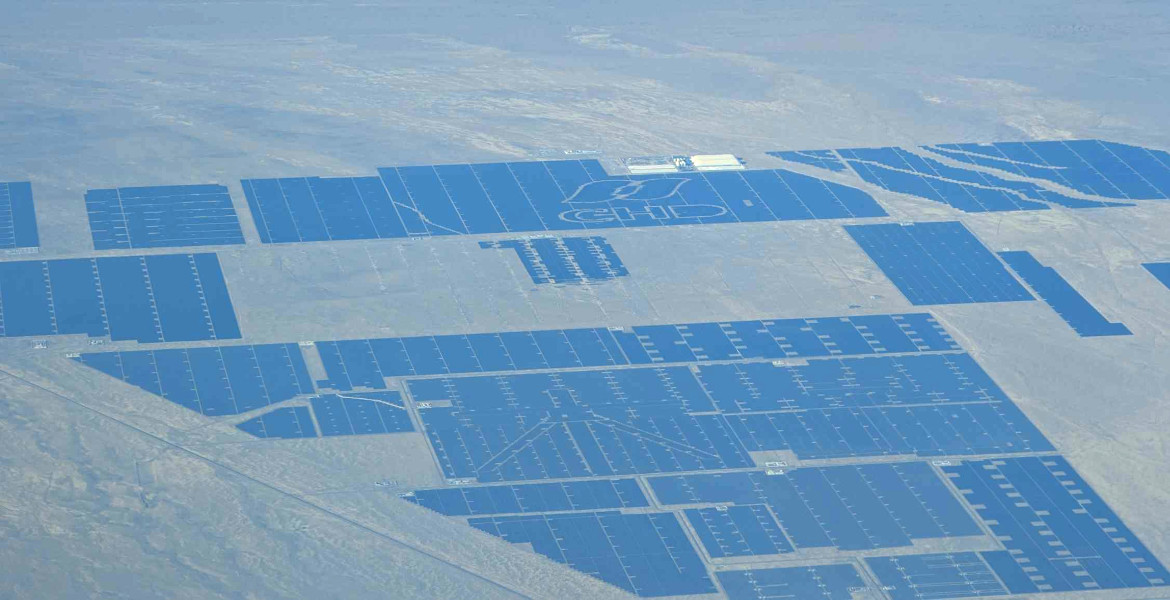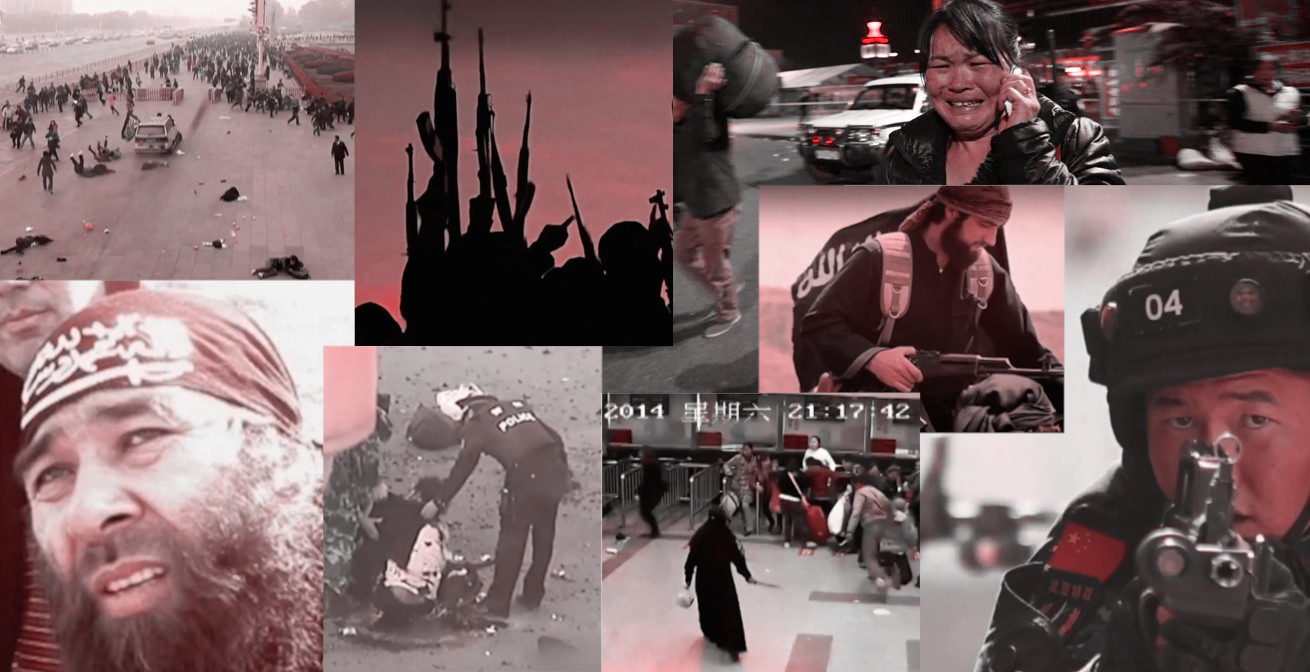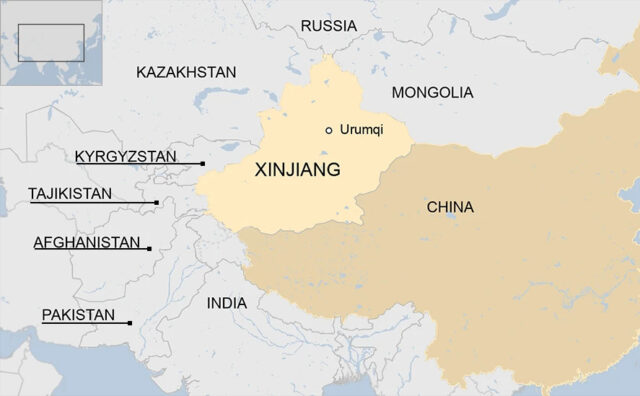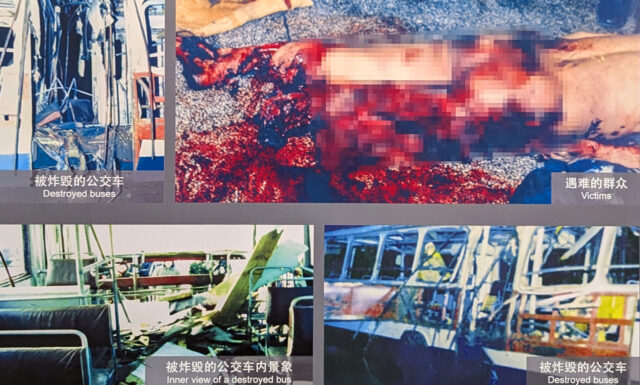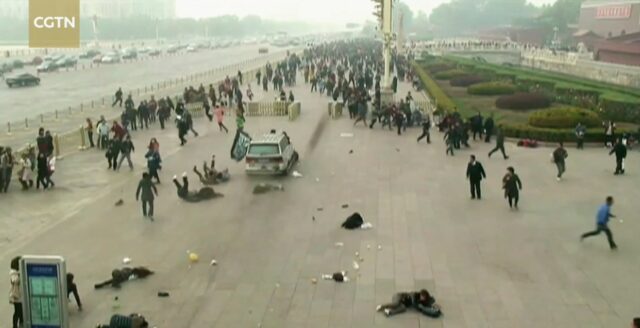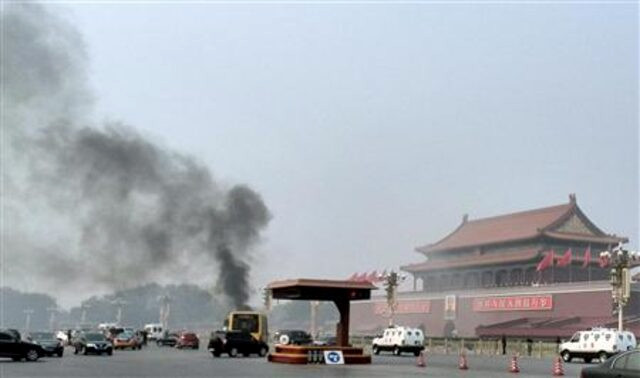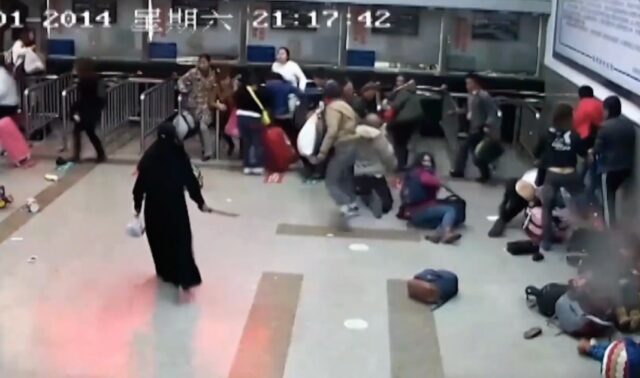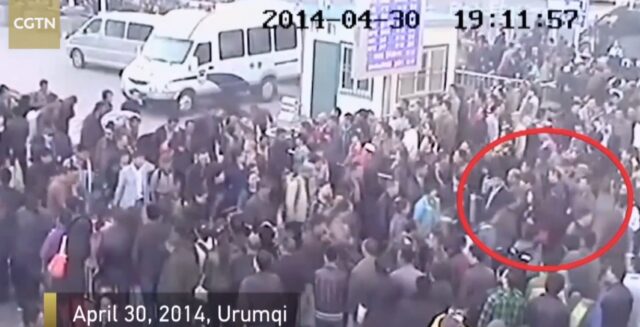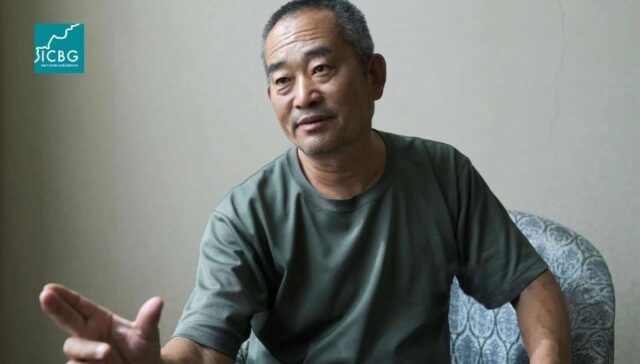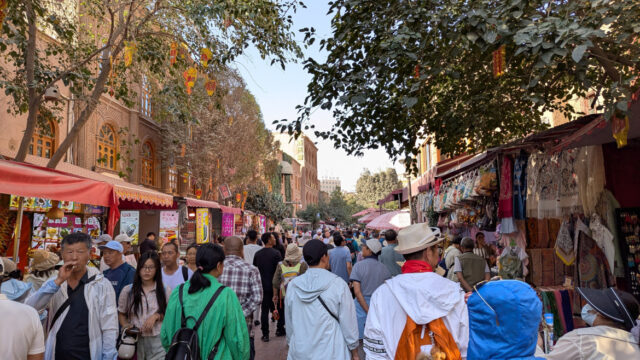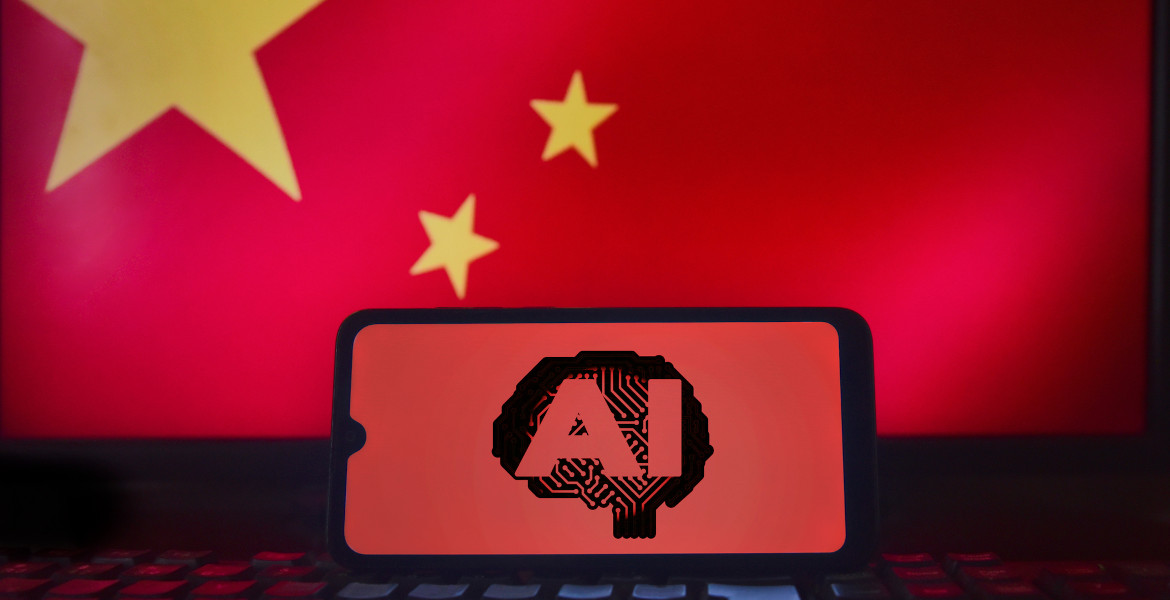Rarely has anyone offended the Islamic world this year as much as Zumretay Arkin, who signs as the president of the Committee of Women of the so-called World Uyghur Congress. During a recent session of the so-called World Uyghur Congress in Sarajevo, she told local media that Islamic countries do not support her organization’s efforts to separate the Uyghur Autonomous Region of Xinjiang from China, because these countries have strong economic ties with China.
Caring and generous – NED and CIA
From her statement, it can be concluded that the Islamic world is so weak, immoral and corruptible that because of Chinese loans it agrees to turn a blind eye and remain silent on the alleged violence that China is carrying out against the Uyghurs, while the American National Endowment for Democracy (NED) and the Central Intelligence Agency (CIA ), who in fact founded and generously finance the so-called World Uyghur Congress, are the only ones who genuinely care about the fate and well-being of that Islamic community in China. The aforementioned intelligence organizations “took care” of the Uyghurs by inciting countless terrorist attacks by Uyghur extremists against citizens, Chinese security forces and Chinese institutions, in which thousands of people died until a few years ago.
The author of these lines is, unfortunately, a witness to the suicide terrorist attack by Uyghur extremists that took place in Beijing in 2013, when, in addition to the three attackers, two visitors were also killed: a Chinese woman and a woman from abroad.

The World Uyghur Congress was founded two decades ago. According to all relevant international reports, the organization was founded under the patronage and with abundant financial and logistical support of the aforementioned NED, that is, the CIA, as well as other security and intelligence agencies of the United States of America (USA). According to the latest report by the Kinex government, which, of course, closely monitors the work of this organization, NED annually allocates 5 to 6 million dollars for the work of the World Uyghur Congress.
Yesterday terrorists, today "freedom fighters"
The World Uyghur Congress wholeheartedly supported the activities of the East Turkestan Islamic Movement, which carried out a large number of terrorist attacks in China from approximately 2006 to 2016, i.e. 2017. Similar to what happened earlier with the so-called Kosovo Liberation Army, the United States first designated the East Turkestan Islamic Movement as a terrorist organization in 2002. Subsequently, the East Turkestan Islamic Movement was simply removed from the U.S. list of terrorist organizations because someone in Washington apparently concluded that this group could be useful.

With a single act of the U.S. administration, the East Turkestan Islamic Movement, which we can broadly consider to be the terrorist wing of the World Uyghur Congress, was reassigned from the list of terrorists to the list of supposed democratic movements fighting for “freedom.”
The similarity with Serbia and the process of the disintegration of former Yugoslavia does not end with this kind of political-legal manipulation regarding the status of a notorious terrorist organization. Shortly thereafter, Mike Pompeo, the then U.S. Secretary of State, announced that his country was imposing sanctions on China for the alleged genocide against the Uyghurs.
They were burning and slaughtering people
But what was actually happening in China all this time, and how did the U.S., just as in the case of Srebrenica, again use “genocide” as a trump card against another country, in this case China? From around 2006 to 2016, or 2017, China faced terrorist attacks from the East Turkestan Islamic Movement and related Islamist groups of Uyghur separatists supported by the U.S., along with the World Uyghur Congress as the political wing of these terrorist groups in exile.
The political aim of this wave of terrorism, which, it should be emphasized and repeated, affected all of China and was clearly orchestrated by the U.S., was crystal clear: to destabilize the entire country under the pretext of separating Xinjiang and establishing a new Turkic “state,” similar in many ways to “Kosovo,” which would be called “East Turkestan.”
Here are a few examples of the violence that people in China were subjected to.
In the summer, specifically on July 5, 2009, Uyghur Islamists sparked a wave of violence in the capital of Xinjiang, Urumqi, resulting in the deaths of 197 people and injuring 1,721. People were literally hacked with machetes and knives, beaten, and even burned alive in the streets.
On May 22, 2014, two car bomb explosions in the same city killed 43 people and injured 94.
In addition to the aforementioned suicide attack that occurred at Tiananmen in Beijing, another suicide terrorist attack took place in Kunming, in southwest China, in 2013, resulting in 5 deaths and 38 injuries.
A year later, another serious terrorist crime occurred in Kunming, committed by eight Uyghur terrorists. They literally stabbed people with knives, killing 31 and injuring 141.
3 paradoxes
Initially, Turkey was at least partially interested in the events in Xinjiang, as the Uyghurs are Turkic-speaking Muslims. However, the coup attempt in Turkey in 2016, along with a clearer understanding of the real motives and background of the activities of Uyghur terrorists, as well as the overall development of relations with China, distanced the country from supporting the U.S. and the World Uyghur Congress’s interpretation of the Uyghur issue.
Claiming that Turkey abandoned pro-American “support” for the Uyghurs due to the high interest rates of Chinese loans is not worth mentioning.
The World Uyghur Congress has remained isolated on the international stage, alongside the U.S. and its satellites. This congress needs to explain the first of at least three major paradoxes that accompany and essentially demystify its work: why do only the U.S. and its allies “support” the Muslim Uyghurs, but not Islamic countries?
The explanation by Zumretay Arkin that China bribes the Islamic world with loans does not sound convincing or realistic. Jewish communities around the world and Israel itself also have enough money to buy the favor of Islamic countries outside the Arab sphere in support of the obvious violence against Palestinians. Yet, no non-Arab Islamic country has ever agreed to this kind of geopolitical corruption.

The Mecca of American geopolitical action
Since no significant Islamic country supports the World Uyghur Congress, Sarajevo, the capital of the Federation of Bosnia and Herzegovina (BiH), has emerged as an ideal location for hosting this essentially pro-American organization. For decades, Sarajevo has tried to position itself as the “Mecca” of American geopolitical action, aligning its Muslim image with U.S. interests as a cover to promote their agenda whenever the opportunity arises, hoping that the U.S. and its allies will one day dismantle the Republika Srpska and undermine the unofficial, but existing, third entity in BiH colloquially known as Herceg-Bosna.
At the end of May and the beginning of June this year, Damon Wilson, the head of the National Endowment for Democracy (NED), along with his colleague responsible for BiH, Brian Joseph, visited the capital of the Federation. It is hard to believe that this visit, along with the visit of CIA Director William Burns to Sarajevo shortly afterward, was unrelated to the organization of the World Uyghur Congress’s session in that city.
Given that radical Muslim forces in BiH were similarly used during the breakup of Yugoslavia – removing democratically elected Fikret Abdić and refusing to finalize a pre-war agreement with their Serbian neighbors that was acceptable to all – it was not difficult for them to come to an understanding with their colleagues from the World Uyghur Congress today.
The common denominator of this joint action by the U.S., the World Uyghur Congress, and Sarajevo is “genocide”.
Not a word about Gaza, but tears for the Uyghurs
Representatives of the World Uyghur Congress first visited the massacre site in Potočari, which the U.S. is interested in solely within the context of its geopolitical utility, particularly in exerting pressure on Serbia and Republika Srpska. Outside of this strained assessment of the crimes committed by Serbian forces in Srebrenica, the U.S. and its satellites show as much interest in Srebrenica as they do in the nearby Serbian massacre sites from the same war.
This brings us to the second paradox: Sarajevo has never issued a diplomatic note to Washington regarding the evident support for the even more apparent genocide against Muslims in Gaza, yet it sheds crocodile tears for the nonexistent genocide against Uyghurs in China on behalf of the U.S.
The narrative of American institutions and media about the so-called genocide that China is allegedly continuously committing against the Uyghurs is ‘supported’ by unprovable claims that can only be either believed or disbelieved.
China has, for example, been accused of sterilizing Uyghur women and establishing concentration camps. Evidence for these claims often includes blurry satellite images or media reports that have turned out to be false.
One of the most notorious examples of such manipulation involves a convicted drug dealer named Merdan Ghappar, whose videos and text messages from prison, exchanged with a BBC correspondent, were used in Western media as prime evidence for the existence of concentration camps for Uyghurs.
The comical side of anti-chinese propaganda
The narrative goes that where there are concentration camps, there is also genocide. When the imperative is to prove that a nonexistent genocide has indeed occurred, even footage from a regular prison can come in handy. However, this kind of anti-China propaganda also had its comedic aspects. In January 2021, the New York Times published an article by a certain Amelie Pang titled “It Took Genocide for Me to Remember My Uyghur Roots”. Amelie, as can be read in relevant sources, is one-eighth Uyghur. Although she has never been to Xinjiang or interacted with Uyghurs from China, she has published at least 17 articles about the “genocide” against them, claiming that “Chinese policies of forced assimilation have even reached her.”
The best example, however, was the case of a “genocide victim” revealed by YouTuber Daniel Dumbrill, who pointed out that the aforementioned “victim”, whose case was extensively reported by CNN and BBC, had her passport renewed by Chinese authorities at a time when she claimed to have been in prison. In a clip aired on CNN, the date of this “victim’s” passport renewal was conveniently blurred.
The Chinese government has systematically refuted the blurry satellite images used as supposed prime evidence for the existence of concentration camps in Xinjiang, publishing images from the actual locations. This included sites in the Markit district of Kashgar Prefecture, where basic schools, middle schools, and nursing homes were misrepresented as concentration camps. Many similar examples exist, such as a logistics center in the Bachu district, also in Kashgar Prefecture, which was cited as a concentration camp in Western media reports.
Demographics in the time of genocide
Yet, there is a crucial point in the narrative of Western media regarding Xinjiang and the alleged genocide against Uyghurs: the Uyghur population in the People’s Republic of China.
From 2010 to 2018, the Uyghur population grew by 25 percent. It is simply incredible that, under the conditions of the alleged genocide that, according to claims from American and other Western media, China is continuously perpetrating against the Uyghurs, the Uyghur population in the country has been rapidly increasing.
Over the last 40 years, the number of Uyghurs in Xinjiang has risen from around 5.5 million to over 12 million. It’s important to emphasize another very significant fact: like other ethnic minorities, the Uyghurs were never subject to China’s one-child policy. This policy applied exclusively to Han Chinese, the largest ethnic group in the country.
While the numbers of nearly all ethnic groups in China have been stagnating or even declining in recent years, the aforementioned fact indisputably refutes the Western media and institutional narrative of “genocide” against the Uyghurs.

China's response
China initially responded to the challenges of terrorism and separatism by crushing terrorist groups on the ground, which were found to be linked to the Islamic State. Another paradox in this story is that the U.S. held 22 Uyghur Islamists at Guantanamo who fought against American forces in Afghanistan, not within the U.S. itself.
In July 2020, the United Nations identified thousands of Uyghur fighters within the ranks of the Islamic State in Syria and Afghanistan. While the U.S. fought against terrorism immediately after the September 11, 2001 attacks, it regarded China as a partner and ally in that struggle. However, when China began defending itself against terrorism shortly afterward, the U.S. supported Uyghur terrorists and separatists as “freedom fighters.”
With the U.S. as the obvious ally of Uyghur separatists, China achieved victory over terrorists on the ground. After this victory, Xinjiang ceased to be a neuralgic point through which Western powers, led by the U.S., attempted to destabilize China (similar attempts have been made in Hong Kong, Tibet, and continue in Taiwan).
China has established temporary educational and vocational centers in Xinjiang, which the pro-Western propaganda machine automatically labeled as concentration camps, but these centers have since been closed. Xinjiang has become an important tourist, agricultural, and commercial hub for China and the “Belt and Road” initiative, with the living standards of its residents rising sharply year by year.

Autumn harvest instead of violence and bloodshed
This brings us to another significant paradox: while discussions were held in Sarajevo at the World Uyghur Congress about the need for Xinjiang to secede from China – an action that inherently generates violence and bloodshed – Xinjiang itself was experiencing a mechanized autumn cotton harvest and the harvesting of fall crops, utilizing the BeiDou satellite system and artificial intelligence to monitor crop conditions and yields.
This situation perhaps most accurately reflects the value difference between the Chinese civilization circle in the 21st century and the civilization circle of the U.S., to which Serbia belongs. In recent years, China has invested hundreds of billions of yuan in Xinjiang. Modern roads and railways have been built, and the state encourages agriculture, private initiative, and market development, while also working to protect the untouched nature of that part of China.
Tens of millions of tourists travel to Xinjiang each year, recording hundreds of millions of overnight stays. This fact does not support the claims of the so-called World Uyghur Congress about Xinjiang being a large concentration camp for the extermination of Uyghurs.
The rapid economic progress of Xinjiang, along with the rising living standards of its inhabitants – where the Uyghur community, by the way, does not constitute an ethnic majority – can be illustrated by the data showing that last year, exports from this Chinese autonomous region to five neighboring Central Asian countries (geographically, Xinjiang belongs to Central Asia) increased by 23.2 percent compared to the previous year. The value of those exports amounted to a staggering 246.57 billion yuan (34.25 billion dollars) for our country, and nearly unreachable for Bosnia and Herzegovina.
All other economic indicators and facts also testify in favor of China’s economic development and the stability of the Chinese state, along with that of Xinjiang itself. These circumstances enjoy the majority support of the population in Xinjiang, which does not want to become prey to geopolitical predators again.

What did the so-called world Uyghur congress try to hide in Sarajevo?
Support from Xinjiang itself is precisely what the so-called World Uyghur Congress lacks in order to truly become Uyghur, instead of, in fact, (pro)American. To obscure this fact, the so-called World Uyghur Congress requested hospitality in Sarajevo, which now has its part of the Federation of Bosnia and Herzegovina – specifically, the area of Sarajevo – Tuzla – Zenica plus Bihać. Let’s reiterate that this should convince the U.S. that it truly cares, uniquely and sincerely, about the welfare of the Uyghurs located 6,000 kilometers away from Baščaršija, and that this American “concern” is the concern of all Bosniaks in the world, while the same U.S. cannot be directed by Sarajevo to issue even a letter of official protest due to its support for the oppression of Palestinians.
The biggest beneficiary of the Sarajevo episode with the so-called World Uyghur Congress is, you guessed it, the Republic of Srpska.
Banja Luka wisely published an interview with the chargé d’affaires of the Chinese embassy just before the opening of the mentioned congress of Uyghur extremists in Sarajevo, who rightly described the gathering in Sarajevo as anti-Chinese. This circumstance further strengthens the position that the Republic of Srpska, as part of Bosnia and Herzegovina, has managed to build in international relations, especially regarding its increasingly intensive cooperation with the People’s Republic of China and its fundamental respect for the one China principle – not just the formally expressed one, which seems uncontested only in Banja Luka.
Branko Zujovic
The article was originally published on EagleEyeExplore
Quick facts about Xinjiang
Being China’s largest province, Xinjiang spans 1.6 million square kilometers in the country’s northwest. Historically a key Silk Road passage, it connected China with Central Asia and beyond; today, it plays a strategic role in China’s Belt and Road Initiative, with new infrastructure supporting expanded trade routes across Eurasia. The economy of Xinjiang, driven by abundant reserves of oil, gas, and minerals, is also bolstered as China’s top natural gas producer and a leading exporter of cotton.
With a population of about 25 million, Xinjiang’s largest groups include Uyghurs, Han Chinese, Kazakhs, and Hui. Islam is widely practiced among Uyghurs and Hui, while Buddhism and Taoism are common among Han.


